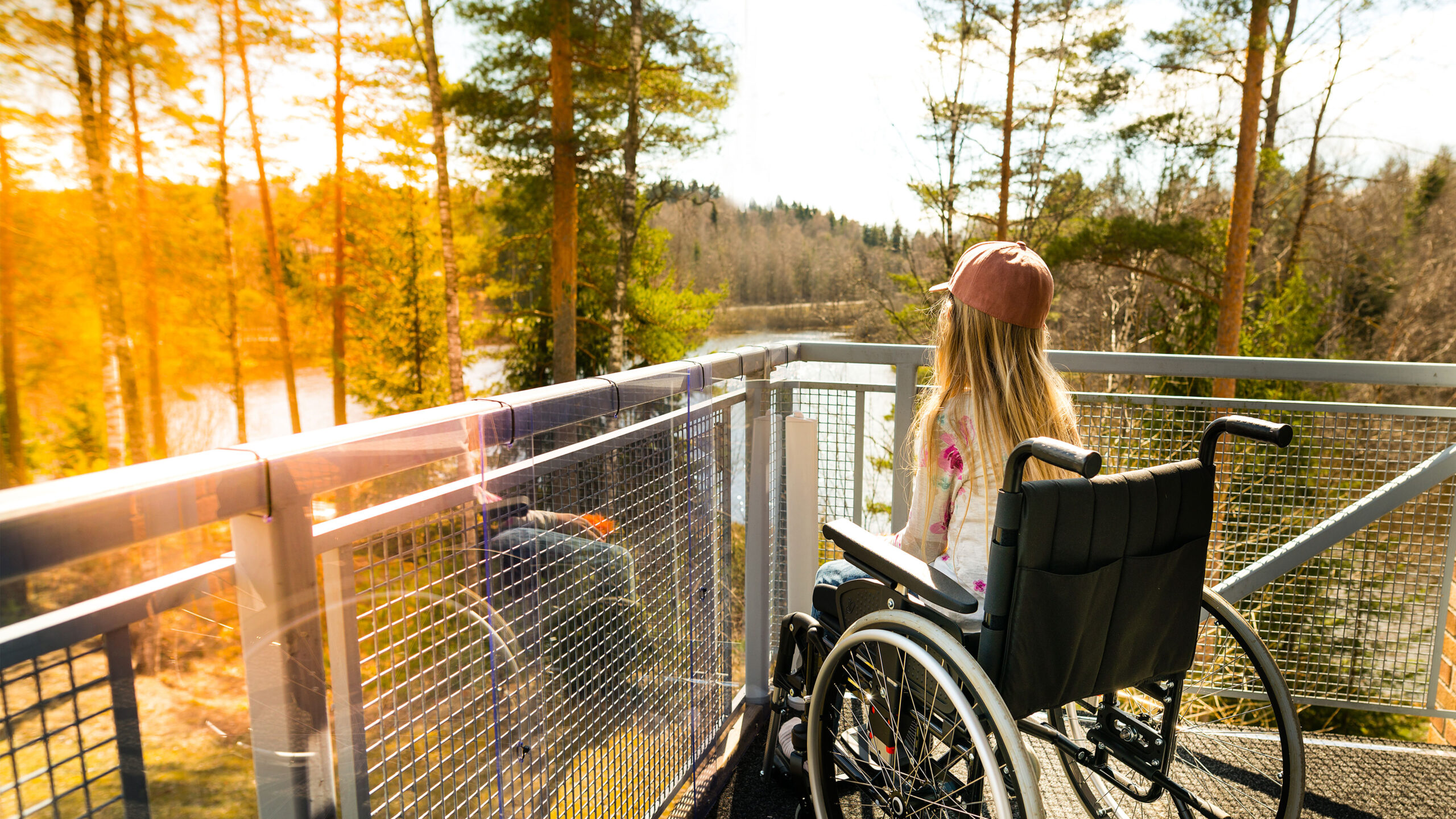“Opening doors to unforgettable experiences for all.”
Accessible tourism refers to the practice of ensuring that travel destinations and facilities are accessible and inclusive for individuals with disabilities. It aims to provide equal opportunities for people with disabilities to enjoy and participate in tourism activities. Accessible tourism involves making adjustments and modifications to various aspects of travel, such as transportation, accommodation, attractions, and services, to cater to the specific needs of travelers with disabilities. By creating accessible destinations and facilities, the tourism industry can enhance the travel experiences of individuals with disabilities and promote inclusivity and diversity in the tourism sector.
Top 10 Accessible Destinations for Travelers with Disabilities
Accessible Tourism: Destinations and Facilities Catering to Travelers with Disabilities
Traveling is a wonderful experience that allows us to explore new places, immerse ourselves in different cultures, and create lasting memories. However, for individuals with disabilities, the idea of traveling can often be daunting due to the lack of accessibility in many destinations. Fortunately, there are several destinations around the world that have made significant efforts to cater to travelers with disabilities, ensuring that everyone can enjoy the wonders of travel.
1. Barcelona, Spain: Known for its stunning architecture and vibrant culture, Barcelona has also made great strides in accessibility. The city has implemented accessible transportation systems, including wheelchair-friendly buses and metro stations. Additionally, many of the city’s top attractions, such as Park Güell and Sagrada Familia, have accessible entrances and facilities.
2. Sydney, Australia: With its iconic landmarks like the Sydney Opera House and Bondi Beach, Sydney has become a popular destination for travelers with disabilities. The city offers accessible transportation options, including wheelchair-accessible taxis and buses. Many of the major attractions have also made efforts to provide accessible facilities and services.
3. Amsterdam, Netherlands: Amsterdam is renowned for its picturesque canals, historic buildings, and vibrant atmosphere. The city has made significant efforts to ensure accessibility for all, with wheelchair-friendly public transportation and accessible attractions such as the Van Gogh Museum and Anne Frank House.
4. Vancouver, Canada: Surrounded by stunning natural beauty, Vancouver is a city that embraces inclusivity. The city’s public transportation system is fully accessible, and many of its attractions, including Stanley Park and the Vancouver Aquarium, have accessible facilities and services.
5. Tokyo, Japan: Tokyo may be a bustling metropolis, but it has also made great strides in accessibility. The city’s public transportation system is equipped with elevators and ramps, making it easier for individuals with disabilities to navigate. Many of Tokyo’s top attractions, such as the Tokyo Skytree and Meiji Shrine, have also implemented accessibility measures.
6. Berlin, Germany: Berlin is a city rich in history and culture, and it has made significant efforts to ensure accessibility for all. The city’s public transportation system is wheelchair-friendly, and many of its attractions, including the Brandenburg Gate and Berlin Wall Memorial, have accessible entrances and facilities.
7. San Francisco, USA: Known for its iconic Golden Gate Bridge and diverse neighborhoods, San Francisco has also prioritized accessibility. The city’s public transportation system offers accessible options, and many of its attractions, such as Alcatraz Island and the Exploratorium, have made efforts to accommodate travelers with disabilities.
8. Cape Town, South Africa: Cape Town is a city that offers breathtaking natural beauty and a rich cultural heritage. The city has made efforts to improve accessibility, with wheelchair-friendly transportation options and accessible attractions such as Table Mountain and Robben Island.
9. Stockholm, Sweden: Stockholm is a city that seamlessly blends modernity with history. The city’s public transportation system is fully accessible, and many of its attractions, including the Royal Palace and Vasa Museum, have implemented accessibility measures.
10. Singapore: Known for its cleanliness and efficiency, Singapore has also made significant efforts to cater to travelers with disabilities. The city’s public transportation system is wheelchair-friendly, and many of its attractions, such as Gardens by the Bay and Universal Studios Singapore, have accessible facilities and services.
In conclusion, accessible tourism is a growing trend that aims to ensure that individuals with disabilities can enjoy the wonders of travel. These top 10 destinations have made significant efforts to provide accessible facilities and services, allowing travelers with disabilities to explore and experience the world. By prioritizing accessibility, these destinations are setting an example for others to follow, creating a more inclusive and welcoming travel experience for all.
Exploring the Best Facilities for Accessible Tourism
Accessible Tourism: Destinations and Facilities Catering to Travelers with Disabilities
Exploring the Best Facilities for Accessible Tourism
When it comes to travel, everyone deserves the opportunity to explore and experience new destinations. For travelers with disabilities, finding destinations and facilities that cater to their specific needs can be a challenge. However, the tourism industry has made significant strides in recent years to ensure that all travelers, regardless of their abilities, can enjoy a seamless and enjoyable travel experience.
One of the key aspects of accessible tourism is the availability of facilities that are designed to accommodate individuals with disabilities. These facilities go beyond simply providing wheelchair ramps and accessible restrooms. They strive to create an inclusive environment that allows travelers with disabilities to fully participate in all aspects of their travel experience.
One of the best facilities for accessible tourism is the provision of accessible accommodations. Many hotels and resorts now offer specially designed rooms that cater to the needs of travelers with disabilities. These rooms often feature wider doorways, grab bars in the bathroom, and roll-in showers. Additionally, they may provide visual and auditory aids, such as flashing fire alarms and doorbells, to ensure that guests with hearing or visual impairments are not left out.
Another important aspect of accessible tourism is transportation. Travelers with disabilities often face challenges when it comes to getting around in unfamiliar destinations. However, many destinations now offer accessible transportation options to ensure that all travelers can easily navigate their surroundings. This includes accessible taxis, buses, and trains that are equipped with ramps or lifts to accommodate wheelchair users. Additionally, some cities have implemented innovative solutions, such as audio announcements and tactile maps, to assist travelers with visual impairments.
In addition to accommodations and transportation, accessible tourism also focuses on providing inclusive recreational activities. Many destinations now offer a wide range of accessible attractions and activities that cater to individuals with disabilities. This includes accessible hiking trails, wheelchair-friendly beaches, and adaptive sports programs. By providing these opportunities, destinations are ensuring that travelers with disabilities can fully immerse themselves in the local culture and enjoy the same experiences as their able-bodied counterparts.
Furthermore, the best facilities for accessible tourism also prioritize the training and education of their staff. It is not enough to simply have accessible facilities; the staff must also be knowledgeable and sensitive to the needs of travelers with disabilities. Many hotels and attractions now provide disability awareness training to their employees, ensuring that they are equipped to provide the highest level of service to all guests. This includes understanding how to assist individuals with mobility impairments, communicating effectively with individuals who are deaf or hard of hearing, and providing appropriate assistance to individuals with visual impairments.
In conclusion, accessible tourism is about more than just providing basic accommodations for travelers with disabilities. It is about creating an inclusive environment that allows individuals with disabilities to fully participate in all aspects of their travel experience. The best facilities for accessible tourism go above and beyond to ensure that travelers with disabilities have access to accessible accommodations, transportation, and recreational activities. Additionally, they prioritize the training and education of their staff to ensure that all guests receive the highest level of service. By embracing accessible tourism, destinations are not only opening their doors to a wider range of travelers but also promoting inclusivity and equality in the tourism industry.
Inclusive Travel: How Destinations are Adapting for Travelers with Disabilities
Accessible Tourism: Destinations and Facilities Catering to Travelers with Disabilities
Inclusive Travel: How Destinations are Adapting for Travelers with Disabilities
Traveling is a wonderful experience that allows us to explore new places, immerse ourselves in different cultures, and create lasting memories. However, for individuals with disabilities, the joy of travel can be hindered by the lack of accessibility in many destinations. Fortunately, there is a growing awareness and effort to make travel more inclusive for everyone. From accessible accommodations to wheelchair-friendly attractions, destinations around the world are adapting to cater to the needs of travelers with disabilities.
One of the key aspects of inclusive travel is accessible accommodations. Many hotels and resorts now offer rooms specifically designed for individuals with disabilities. These rooms are equipped with wider doorways, grab bars in the bathroom, and lower beds for easier access. Additionally, some accommodations provide visual and auditory aids for guests with hearing or visual impairments. These inclusive accommodations ensure that travelers with disabilities can enjoy a comfortable and hassle-free stay.
Beyond accommodations, destinations are also focusing on making their attractions and landmarks accessible to all. Museums, for example, are implementing measures to ensure that visitors with disabilities can fully enjoy their exhibits. This includes providing wheelchair ramps, elevators, and tactile displays for individuals with visual impairments. Similarly, theme parks are introducing accessible rides and attractions, allowing everyone to experience the thrill and excitement they offer.
Transportation is another crucial aspect of inclusive travel. Many airports and train stations now have designated accessible parking spaces and ramps for wheelchair users. Inside the terminals, there are often accessible restrooms and elevators. Airlines have also made significant progress in accommodating travelers with disabilities. They provide assistance with boarding and deplaning, as well as specialized seating options for individuals with mobility limitations. These improvements in transportation infrastructure ensure that travelers with disabilities can easily navigate through airports and reach their desired destinations.
In addition to physical accessibility, destinations are also focusing on providing inclusive information and services. Many tourism boards and travel agencies now offer comprehensive guides and resources for travelers with disabilities. These guides provide information on accessible attractions, transportation options, and accommodations. They also highlight any potential challenges that individuals with disabilities may face in a particular destination. By providing this information, travelers can plan their trips more effectively and make informed decisions about their travel arrangements.
Furthermore, destinations are training their staff to be more inclusive and sensitive to the needs of travelers with disabilities. This includes educating employees on disability etiquette, communication techniques, and assistance protocols. By fostering a culture of inclusivity, destinations ensure that all visitors, regardless of their abilities, feel welcome and supported throughout their journey.
In conclusion, the travel industry is making significant strides towards inclusivity by adapting destinations and facilities to cater to travelers with disabilities. From accessible accommodations to wheelchair-friendly attractions, destinations around the world are working towards creating a more inclusive travel experience. By providing accessible accommodations, making attractions and landmarks wheelchair-friendly, improving transportation infrastructure, offering inclusive information and services, and training staff to be more inclusive, destinations are ensuring that travelers with disabilities can enjoy the wonders of travel just like anyone else. With these efforts, the world is becoming a more accessible and inclusive place for all.In conclusion, accessible tourism is an important aspect of the travel industry that focuses on providing destinations and facilities that cater to the needs of travelers with disabilities. It aims to ensure equal opportunities and experiences for all individuals, regardless of their physical or cognitive limitations. Accessible tourism involves the provision of accessible transportation, accommodation, attractions, and services, as well as the implementation of inclusive policies and practices. By promoting accessibility and inclusivity, destinations and facilities can enhance the travel experiences of individuals with disabilities and contribute to a more inclusive society.




